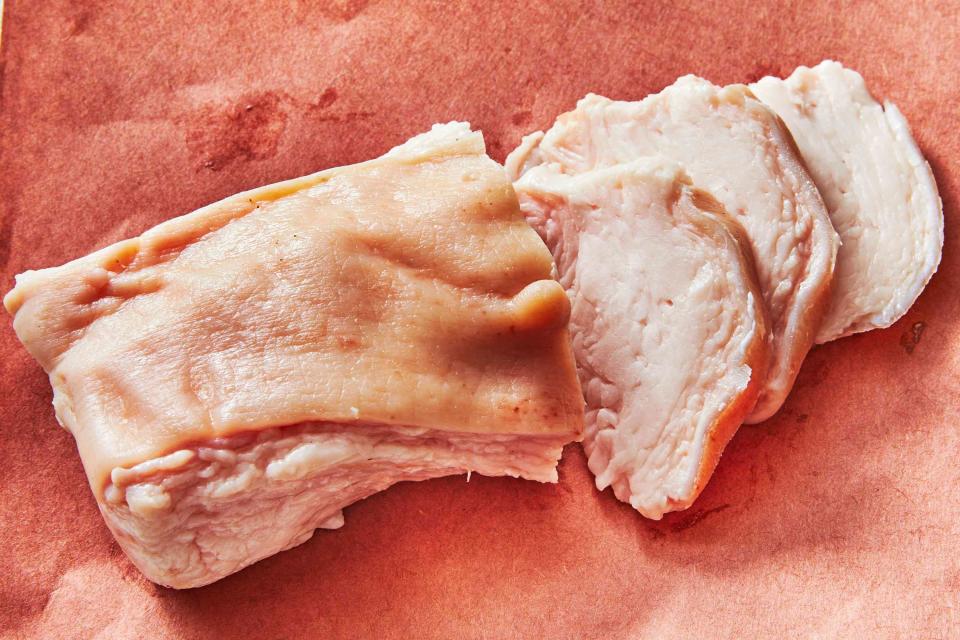What Is Fatback?
Often used in beans, potatoes, and peas for its meaty richness, fatback is also sometimes fried and eaten on New Year's Day.

Caitlin Bensel; Food Styling: Torie Cox
Fatback is exactly what it sounds like: the fat from the back of a pig. A hard fat, pork fatback can be cooked whole, sliced, diced, or even ground, and it's used to add both moisture, fat. and flavor to a wide variety of dishes. If you’ve seen little flecks of fat in salami or mortadella, that is fatback.
Fatback is also the name of a traditional dish in the South served on New Year’s Eve. It is fried or baked until golden brown and served with black-eyed peas and greens to bring good luck.
How To Use or Cook With Fatback
You can use fatback to make a liquid fat or savory lard by rendering it over low heat until the pieces shrink and reduce as much fat as possible.
Lardo, a kind of Italian charcuterie, is made by curing fatback with salt and herbs.
Thin slices of fatback are used to wrap roasts and to line terrines.
Ground fatback is used in different kinds of sausages and charcuterie to lend richness.
Fatback can be used to flavor soup beans, rice and beans, and vegetables, such as greens.
It adds richness to gumbo, grits, or fried dishes, such as fried green tomatoes.
Substitutes for Fatback
Because fatback is not commonly found in all grocery stores—and sometimes only at New Year's—you may need to find a substitute to use in recipes that call for it. Fatback does not have any meat, but other very fatty cuts of pork that do have some meat can sometimes be used in place of fatback.
Consider these alternatives for pork fatback:
Pork belly is another flavorful cut of fatty pork
Bacon, which is cured pork belly, is another fatty cut of pork that adds flavor, fat and moisture
Streaky pork is located between the hard fatback and the pork belly and is named for the streaks of meat in the fat
:
For more Southern Living news, make sure to sign up for our newsletter!
Read the original article on Southern Living.

